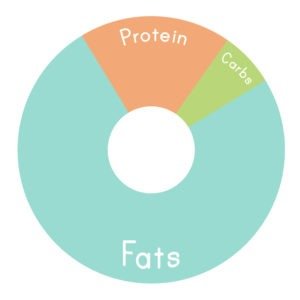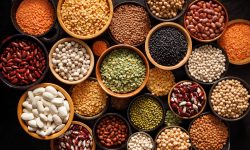Donating 10,000 meals in Pulses! For #WorldPulsesDay Spud is donating 10,000 meals worth with pulses…
If you follow anything in the “wellness” world, you’ve probably heard of the keto diet. You may know it’s kind of similar to Atkins or paleo, but if you’re still a little hazy on the details, we’re here to help.
What is the keto diet?
Believe it or not, the keto diet originated as a treatment for epilepsy in children – and it worked! Ketones, and another chemical produced by the diet, decanoic acid, do seem to help minimize seizures.
As a weight loss plan, the keto diet is another form of the low-carb diet that started to gain popularity in the 1950s, but really started to blow up in the ‘90s, spawning such diets as the Atkins, South Beach, Whole30, and paleo.
How does it work?
Basically, the keto diet requires you to eat a high amount of fat, a normal amount of protein, and an extremely low amount of carbohydrates. The idea behind this is that it will force your body to burn fat instead of carbs for energy.
Normally, you eat carbs and your body converts them into glucose to fuel the body and the brain. When you don’t eat enough carbs for this, the liver converts fat into fatty acids and ketones, which replaces glucose as an energy source for the brain. When you have elevated level of ketones in the blood, you are in a state of ketosis. In case you didn’t put it together, the “keto” in the keto diet is short for ketosis. The goal is to stay in a state of ketosis to keep burning fat.

Usually the macro breakdown of the keto diet is as follows:
- 70-80% of calories from fat
- 20-25% of calories from protein
- 5-10% of calories from carbohydrates
For reference, the acceptable macronutrient distribution ranges (AMDR) for men and women over 19 set out by the Canadian Government is as follows:
- 20-35% of calories from fat
- 10-35% of calories from protein
- 45-65% of calories from carbohydrates
What can you expect when you start the keto diet?
Side Effects. When you first start a keto diet, you will likely experience some side-effects. Common side-effects in the early stages are known as “the keto flu” – tiredness, nausea, mental fog, cramps, headaches, diarrhea and other digestive issues like bloating and gas. Once you get past the initial keto flu stage, you may still experience bad breath, leg cramps, increased cravings, and constipation.
Weight loss – as long as you are eating the right number of calories. With any diet, calories in vs calories out is what results in weight loss, and if you eat more calories than you’re burning, you won’t lose weight no matter what those calories are made of.
How to get started
At least at the start, you’ll probably want to use a calorie and macro tracker to make sure you are eating the right amount and the right macro split. There are many apps you can use for this.
It can also be helpful to meal plan when you’re starting out. That way you know in advance that you’re set up for success, because when we’re hungry and don’t know what to eat, it’s really easy to fall back on carbs.
If you keep the keto diet up for a long enough time, you’ll probably just be able to eat that way without all the planning and tracking, but if it’s new to you, these things can really help you stay on track.
You’ll want to stock your kitchen with keto-friendly foods (and ideally remove any non-keto foods to avoid temptation).
Keto-friendly foods include:
Healthy fats – oils, butter and ghee, and animal fats like lard
Proteins – meat and fish (especially fattier ones), organ meats, eggs
Non-starchy veggies – leafy greens, cruciferous veggies, cucumber, celery
Avocados
Foods to avoid:
Any type of sugar/syrup – white, brown, raw, honey, maple syrup, agave,
Any grain or products made of grains – wheat, oats, rice, corn, quinoa
Most processed food
Sweetened or caloric beverages – some people will drink alcohol on a keto diet (if it fits their macro/calorie allowance) but most would consider this a waste of calories.






